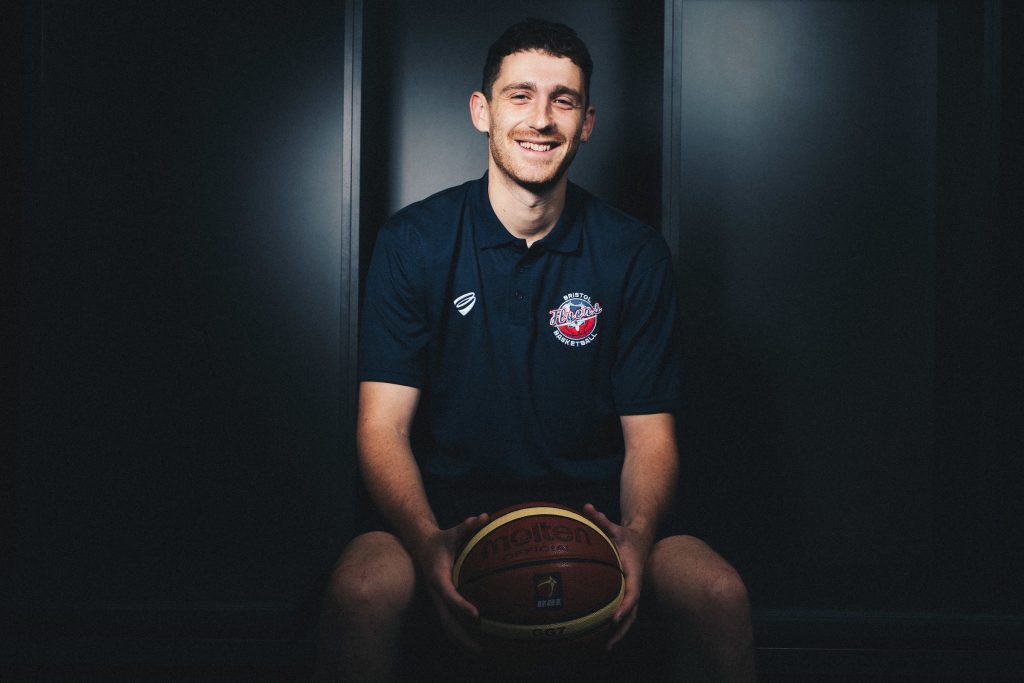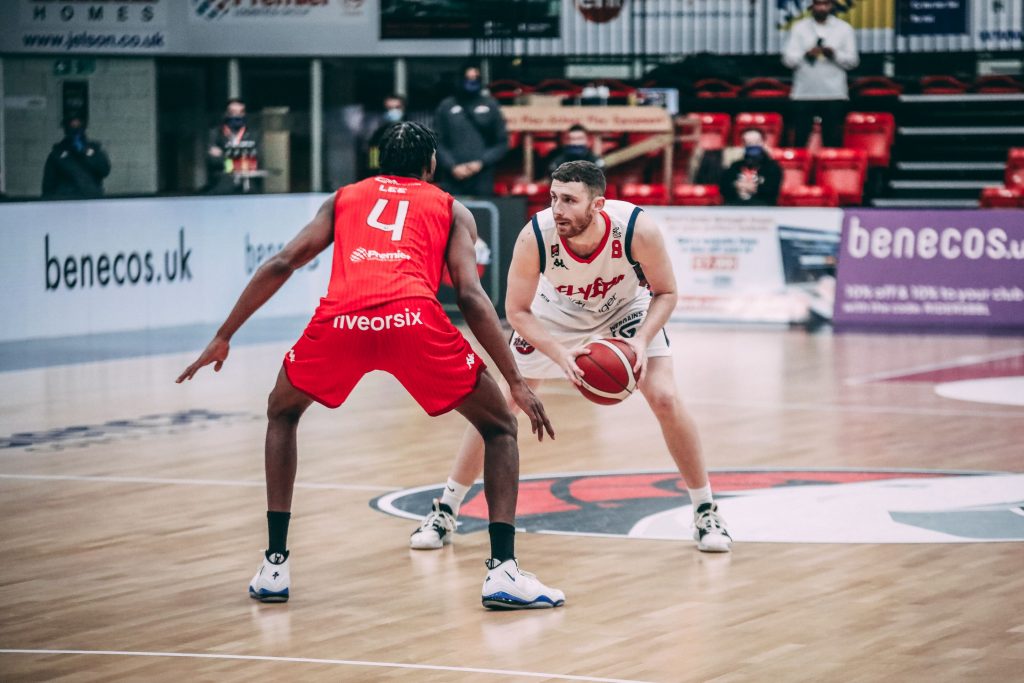6 Things Everyone Can Learn From My Training As a Professional Athlete
By Josh Rogers, Basketball Player for Bristol Flyers (UK)
I can still remember my first college basketball game in the USA. I’d just received a scholarship to play at Carson Newman University, in Tennessee. As I sat on the bench – a stick-thin, nervous kid from England, I looked up at the stadium. It was unlike anything I’d seen before. Just a few months ago I was playing in a school sports hall in front of a few parents and now here I was, in a shiny 8,000 seat monster stadium in the US.
There was a stoppage in play. My coach called me in. This was the moment I’d been dreaming of. The spotlight. The roar of the fans.
Silence.
A stunned quiet fell across the crowd. Not a sound, except for a solitary shout from the very back of the stands.
“Somebody get him a meal plan”.
Hey, you win some you lose some, and they weren’t exactly wrong – let’s just say I had a long way to go in my strength training journey.
Since this baptism of fire, I’ve been lucky enough to enjoy an 8-year collegiate and professional career that has allowed me to work with some incredible strength and conditioning coaches.
I’ve been able to pick up some useful information along the way and it’s certainly helped me out – I no longer get abuse from fans about how thin I am. Now they just throw coins and insult my family – happy days!
Here are 6 things I’ve learned about strength training as a professional athlete and how you can utilise them to help you achieve your own fitness goals.

Compounds, Compounds, Compounds
In the professional teams I’ve played on, weights sessions are focused almost entirely on compound movements (movements that recruit multiple muscle groups – such as squats, deadlifts, bench press and pull-ups). Compound movements are really effective as they recreate the functional movement patterns that we use in a game.
Isolation exercises – which target just one muscle group – are generally only used for players rehabbing from injury. However, towards the end of the season, with summer approaching, you will without fail (and I mean without fail) catch one or two players sneaking bicep curls into their programme.
This isn’t to say isolation movements don’t have a place – they can be very effective when used the right way. But compound, multi-joint movements should make up the foundation of your strength programme.
Mobility is key
I scoffed when an older player first told me I should try yoga. As a 19-year-old who thought he knew everything, my strength and conditioning formula was, well…lift weights. That was about as advanced as it got. Stretching was something I did for 5 minutes to warm up. And besides, yoga was just for the spiritually enlightened and the middle-aged right?
Very, very wrong. After about 3 sessions I started to notice huge improvements in my movement patterns, lateral quickness and vertical jump. I also found I was recovering much faster after practices. I now swear by it, and recommend it to any young player I work with.
In the professional game, around 40% of our gym sessions are mobility-based. The advantages of mobility work are endless – reducing the chance of injury, aiding recovery, and improving posture.
It can also work wonders for strength. For example, it can be tempting to try and improve a squat by simply adding weight and persevering. However, the limiting factor is often hip and ankle mobility. Taking a step back and focussing on mobility can lead to big strength improvements in the long-run.
Try adding 1-2 30-minute mobility based sessions, such as yoga, Pilates or active stretching into your weekly schedule.

Manage the Load
During the season, we use load management apps to monitor our workload and fatigue. Each player must fill out an online questionnaire after every session which includes all sorts of data points – from how we’ve slept, to our wellbeing levels, to our muscle fatigue. This is all fed directly back to our coaches who then tailor our sessions accordingly. If levels of fatigue are getting too high, there will often be a day or two of rest.
Without fail, the team comes back from a rest period faster, stronger, and more energised.
If you’re finding yourself at a plateau you just can’t seem to get over, the temptation can be to push through it and train even harder. This can sometimes lead to stunted progress, fatigue, or injury.
Don’t be afraid of embracing a well-timed, active rest period. If you’ve been going all out, try 2-3 days of light level activity like swimming or walking, and you may well find you come back noticeably stronger and fitter than before.
Conquer the Hill
It was Jack Thomas (founder of BASE), who first introduced me to hill sprints. I remember standing at the bottom of the notorious Marlborough Hill, in Bristol, UK, thinking ‘what have I got myself in for?’ Needless to say, 30 minutes later, and after 10 trips up and down, I was sitting on the pavement, head in hands, trying not to throw up.
But since then, it’s become my go-to exercise to get ready for the season. The majority of professional basketball players I’ve played with use hill sprints in one form or another during pre-season training.
Hill sprints are a great way to improve muscular endurance, with much less impact on the joints when compared to conventional jogging. There’s also something psychologically about getting to the top of the hill that just makes you feel amazing.
If your current jogging routine is getting a bit stale, give hill sprints a try. Find a steep incline near you and start small:
– 10-second sprint up
– The walk back down is your rest time
– Repeat 5-8 times
Bangkok is notoriously flat, so if you don’t have a local hill, BASE group classes are a great way to get these ‘sprints’ in, with short, impactful treadmill, rowing, and bike intervals.
Don’t Neglect the Eccentric Phase
Every strength coach I’ve worked with during both my collegiate and professional career has been an absolute stickler for the eccentric, or down, phase. It’s very easy to overlook this part of an exercise, and the temptation can just be to throw the weight up there and get the reps done as quickly as possible.
We are often made to strictly count 3, 4 or 5 seconds on the way down, and the results speak for themselves. A slow eccentric phase has been shown to increase strength and hypertrophy, while also ensuring the movement is more controlled – thus reducing the risk of injury.
Stay Specific
At the start of each season, teams run a number of physical tests on players. This includes vertical and lateral jump, body fat percentage, and the dreaded weigh-in (you can imagine my horror when I came in at 7 kilograms overweight after the first lockdown).
Players receive an individual programme depending on their position, body type, and weaknesses. The difference between programmes for, let’s say, a powerful centre and a quick point guard, are night and day.
It sounds obvious but unfortunately, I see a lot of trainers prescribing one-size-fits-all programmes to clients with extremely different goals. If you want to really take your training to the next level and reach your ideal fitness level, it’s important to get a programme that is specific to you.
If you’re not sure where to start with this, a BASE Coach can assist you with a personal training program specific to your goals.
